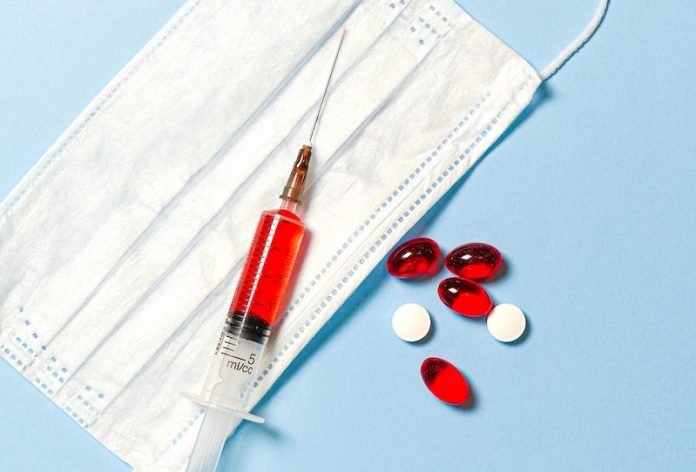
When the COVID-19 virus penetrates human cells, it lets the human host cell produce proteins for it.
One of these viral proteins, called PLpro, is essential for the replication and rapid spread of the virus.
In a recent study at Goethe University and elsewhere, researchers found that the inhibition of this viral enzyme not only blocks virus replication but also strengthens the anti-viral immune response at the same time.
The study is published in Research Square. One author is Laura Schulz.
In the case of an infection, the COVID-19 virus must overcome various defense mechanisms of the human body, including its non-specific or innate immune defense.
During this process, infected body cells release messenger substances known as type 1 interferons. These attract natural killer cells, which kill the infected cells.
One of the reasons the SARS-CoV-2 virus is so successful—and thus dangerous—is that it can suppress the non-specific immune response.
In addition, it lets the human cell produce viral protein PLpro (papain-like protease).
PLpro has two functions: It plays a role in the maturation and release of new viral particles, and it suppresses the development of type 1 interferons.
The researchers have now been able to monitor these processes in cell culture experiments.
Moreover, if they blocked PLpro, virus production was inhibited and the innate immune response of the human cells was strengthened at the same time.
The molecular dynamics calculations have made a major contribution to elucidating the underlying mechanism and better understanding the binding of the inhibitor.
In the study, the team found that inhibiting PLpro is a very promising double-hit therapeutic strategy against COVID-19.
The further development of PLpro-inhibiting substance classes for use in clinical trials is now a key challenge for this therapy.
The team says under difficult circumstances at the peak of the first COVID-19 wave, many researchers discovered how the virus interferes with human immune response and at the same time identified possible treatment in the form of an inhibitor.
Copyright © 2020 Knowridge Science Report. All rights reserved.



